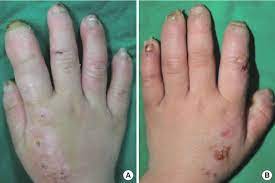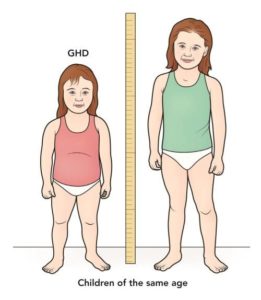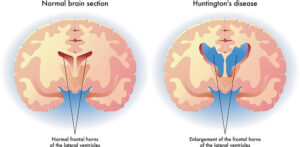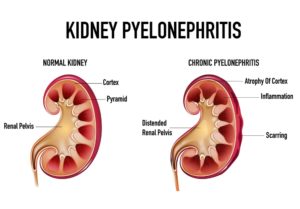Congenital insensitivity to pain with anhidrosis (CIPA) is characterized by the inability to perceive pain and temperature, as well as diminished or nonexistent sweating (anhidrosis). This disorder is also known as type IV inherited autonomic and sensory neuropathy. The signs and symptoms of CIPA develop early, typically at birth or during infancy, but affected individuals can survive into maturity with proper medical treatment.
Insensitivity to pain and temperature frequently results in repeated severe injuries. People with CIPA frequently self-injure unintentionally, typically by biting their tongue, lips, or fingers, which can result in spontaneous amputation of the affected area. Those with CIPA also recover slowly from skin and bone damage. Repetitive trauma can result in chronic bone infections (osteomyelitis) or Charcot joints, a disorder characterized by the destruction of the bones and tissue surrounding the joints.
Typically, perspiration serves to lower the body temperature. However, in individuals with CIPA, anhidrosis frequently produces repeated, extremely high fevers (hyperpyrexia) and high-temperature-induced seizures (febrile seizures).
In addition to the basic features, CIPA is accompanied by additional indications and symptoms. Many affected people have thick, leathery skin (lichenification) on their palms or deformed fingernails and toenails. Additionally, they may have bald spots on their scalp (hypotrichosis). Approximately fifty percent of people with CIPA exhibit indicators of hyperactivity or emotional instability, and a large proportion of those affected have intellectual handicap. Some individuals with CIPA have hypotonia (poor muscular tone) while they are young, but their muscle strength and tone return to normal as they age.
Cause
A genetic defect hinders the production of nerve cells responsible for conveying signals of pain, heat, and cold to the brain, resulting in CIPA. The condition is autosomal recessive in transmission.
A mutation in the NTRK1 gene, which encodes the neurotrophic tyrosine kinase receptor, causes CIPA. NTRK1 is a nerve growth factor receptor (NGF). This protein improves the survival of embryonic sensory and sympathetic neurons by inducing the formation of axons and dendrites. The mutation in NTRK1 prevents NGF from binding properly, resulting in abnormalities in nociceptive reception development and function.
Mitochondrial abnormalities in muscle cells have been identified in CIPA patients. The eccrine glands of the skin are not innervated, and nerve biopsies reveal a deficiency of tiny myelinated and unmyelinated fibers.

Symptoms
The majority of individuals with congenital insensitivity to pain will exhibit the following:
Pain insensitivity is a condition in which there is no response to painful sensations induced by cuts, burns, or injections.
- Repeated severe injuries and inadvertent self-injury — such as serious bite wounds on the tongue, mouth, and fingers — are indicators of self-injury disorder
- Anhidrosis, or hypohidrosis, is the diminished capacity to perspire.
- Anosmia
- No response to high temperature
- Recurrent high fever with possible febrile convulsions
- A corneal reflex occurs when a person blinks in response to anything touching their cornea.
- Intellectual disability
CIP symptoms can vary from person to person; a single individual with CIP may exhibit a few or multiple of these symptoms. Although congenital insensitivity to pain is exceedingly uncommon, you should consult your child’s physician if he or she does not react to pain or frequently injures oneself.
Diagnosis
There are no simple diagnostic tests for CIPA, although clinicians do have access to a few diagnostic aids.
For instance, they can take a small tissue sample and examine it under a microscope (biopsy) in order to detect undeveloped nerves and a lack of sweat glands.
A genetic test to look for an aberrant TRKA (NTRKI) gene is the most conclusive diagnostic test for CIPA.
This can be performed prior to delivery or at any point in your or your child’s life.
CIPA disease life expectancy
In these people, pain-sensing nerves are improperly attached to regions of the brain that receive pain messages. CIPA is exceedingly risky, and patients seldom survive past the age of 25. Even while some of them are able to live relatively normal lives, they must continuously check for wounds, bruises, self-mutilation, and other unfelt ailments. Self-mutilation is an almost certain symptom of this condition, with the teeth, lips, tongue, ears, eyes, nose, and fingers being the most common targets.
Treatment
No treatment exists for CIPA. Also, nothing can replace absent pain sensations or increase perspiration.
The goal of treatment for CIPA is to live as safely as possible with the illness. This requires teaching children with CIPA how to control their activities and care for themselves, as they will not get pain or temperature signals to assist them.



